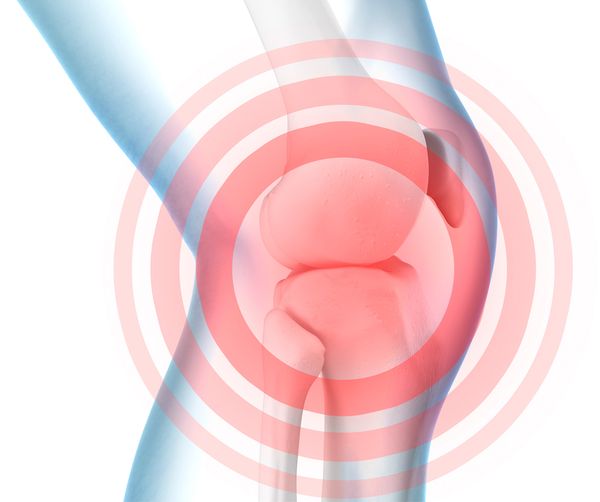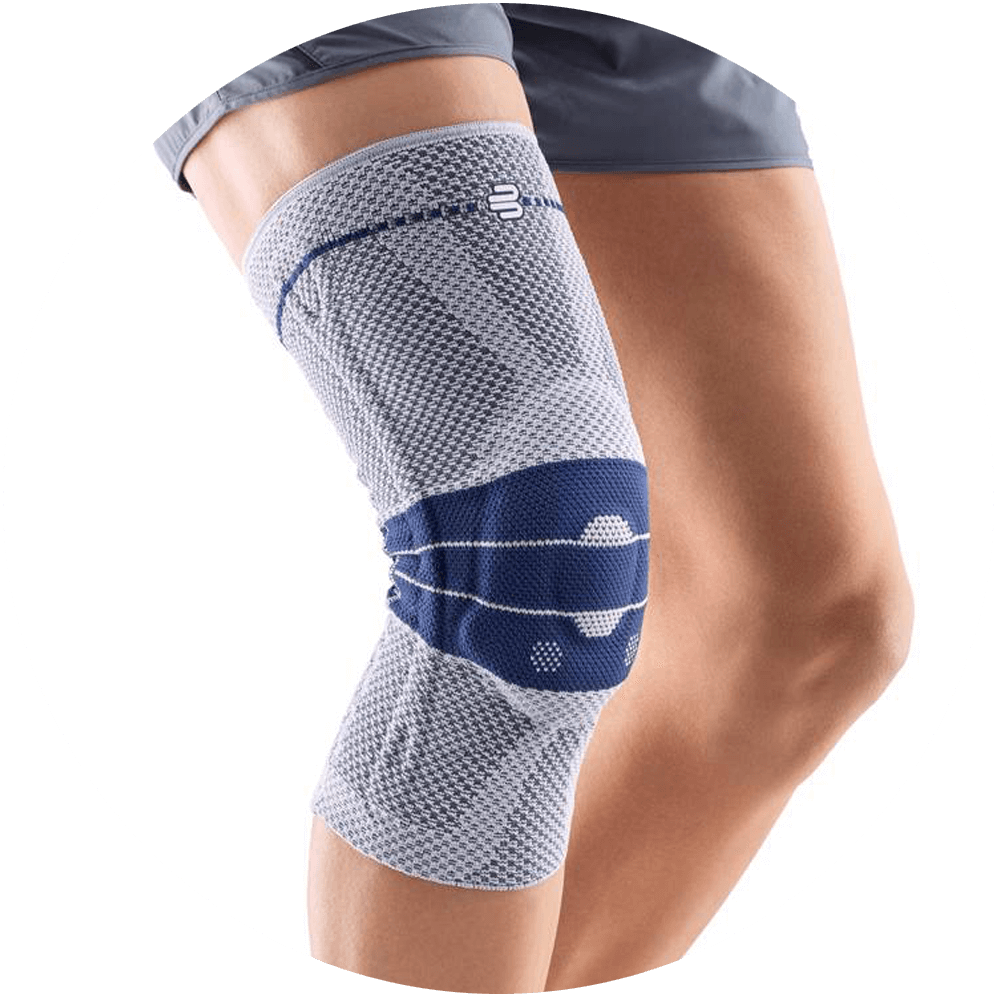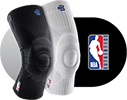GenuTrain Knee Brace proven to relieve pain and swelling.
Is your knee swollen and unusually immobile? Does your knee hurt while bending and stretching? Then it is likely that fluid has accumulated in or around your knee joint. The reason for this may be knee joint effusion, or "water in the knee" as some people call it. This condition is often caused by an injury in the knee joint, like an overuse injury, or a stretched or torn ligament. Whatever the cause, if appropriate treatment and relief of the knee starts early, acute knee swelling will usually fully heal.
Symptoms of a Swollen Knee
Your knee might feel swollen and puffy, especially in comparison to the non-affected knee. You might also feel pain and pressure inside your knee joint. Your knee is stiffer than usual and you feel pain or pressure while bending or stretching it. The fluid build-up can be evenly around the joint or located in a certain area.
Knee Effusion - swelling inside knee joint
Knee Edema - fluid accumulation in the tissue around the knee

When to see a doctor
While most knee pain and swelling can be treated at home, consult a doctor if it does not subside within a few days.
Immediately see a doctor if you experience fever, chills, or if your knee becomes red and feels warm to the touch, as this could indicate infection.
Cause for a swollen or inflamed knee
Swelling is a sign of inflammation. Depending on the cause of the inflammation, knee swelling can be acute after an injury or chronic due to underlying conditions. Rheumatic diseases or osteoarthritis are often responsible for swollen knees in older patients, as degenerative joint wear impairs the knee joint function, resulting in recurring inflammation.
Injuries:
- Stretched or torn ligament
- Meniscus tear
- Overuse or repetitive strain injury
Disease and underlying conditions:
- Osteoarthritis/Rheumatoid Arthritis
- Gout or Pseudogout
- Bursitis
- Cysts
- Tumors
Infection:
- Lupus
- Lyme Disease
- Acute Infection following surgery or an open injury
After examining the joint your doctor might test the fluid in your knee. Other diagnostics include imaging technology, such as ultrasound, X-ray, computed tomography (CT) or magnetic resonance imaging (MRI) as well as a blood test.
Treating a swollen knee
Home remedies
The most important component of treatment is to alleviate pain quickly. Depending on the cause of the swelling, you may want to try these proactive treatment measures at home:
- Rest to avoid excessive strain, as part of RICE Therapy (Rest, Ice, Compression, Elevation
- Stabilize the joint and reduce pain and swelling with the Bauerfeind GenuTrain knee support
- Take over the counter anti-inflammatory medication (NSAIDs) such as Ibuprofen to further reduce pain and inflammation
Advanced Therapy
- Physical therapy exercises to strengthen the muscles around the knee
- Surgery may be necessary in extreme cases
GenuTrain Knee Brace
The new-and-improved GenuTrain provides secure support and relief from knee pain and swelling. With a new Omega+ pad, GenuTrain provides targeted stimulation to areas of the knee that influence proprioception and mobility. Its anatomically contoured design with soft knitted fabric provides gentle massage and medical-grade compression, activating the body’s natural metabolic response to pump out swelling and inflammation. GenuTrain is soft, breathable and moisture-wicking, especially in the sensitive area in the back of the knee, for all-day wearing comfort.

Recovery Time from a swollen knee
Typically mild and overuse injuries heal with conservative therapy within a few days. However, chronic conditions such as arthritis might require some time to heal or manage. Bauerfeind's GenuTrain knee support can help you get back on your feet faster - relieving your knee pain and swelling while you recover to full strength and mobility.



